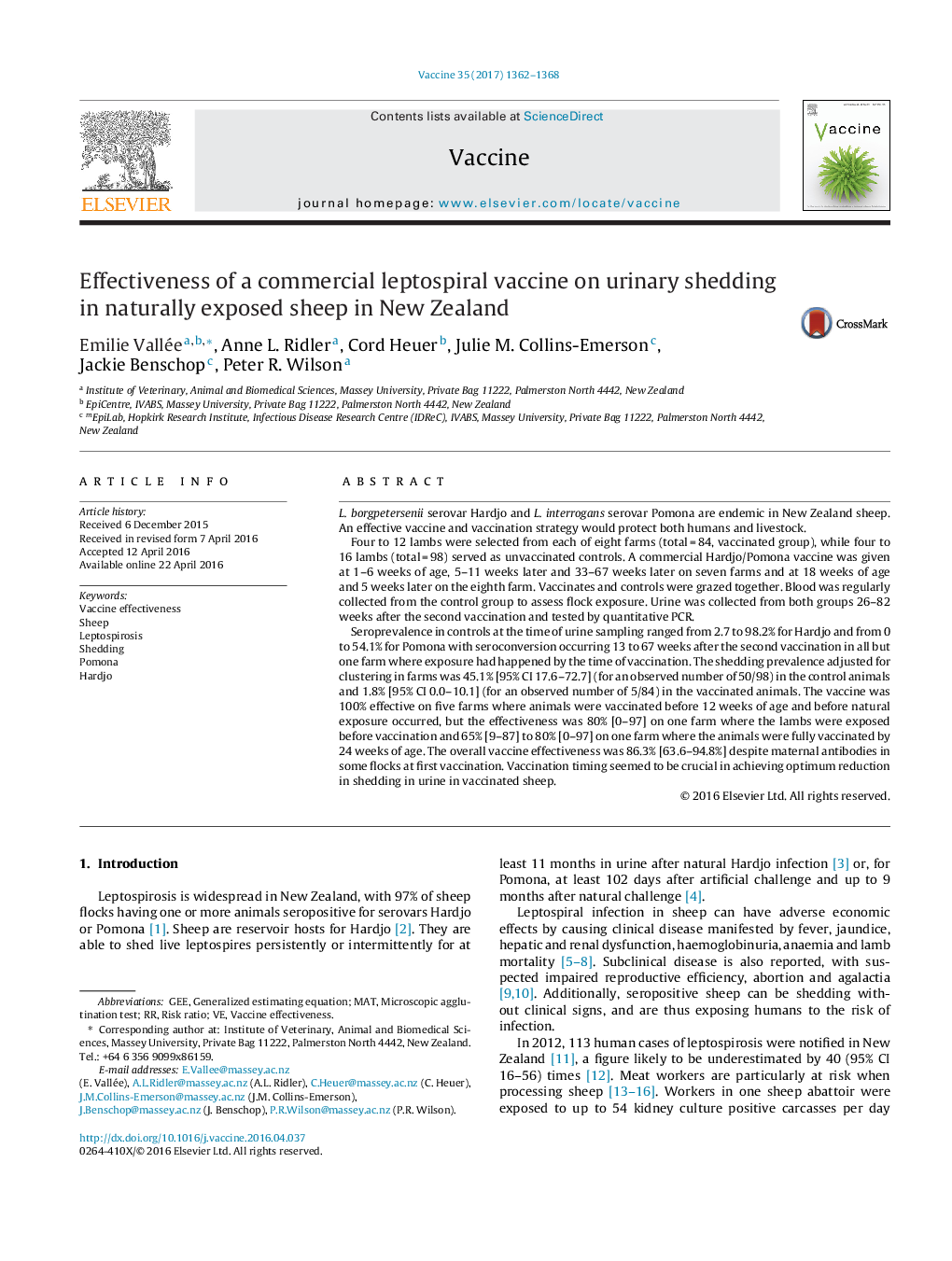| کد مقاله | کد نشریه | سال انتشار | مقاله انگلیسی | نسخه تمام متن |
|---|---|---|---|---|
| 5536739 | 1402302 | 2017 | 7 صفحه PDF | دانلود رایگان |
- All study farms had a high exposure to Hardjo, and three to Pomona.
- The vaccine effectiveness on the study farms was 86.3%, with within-farm range of 76-100%.
- The presence of maternally-derived antibodies did not reduce vaccine effectiveness.
- The effectiveness was affected by infection before vaccination.
L. borgpetersenii serovar Hardjo and L. interrogans serovar Pomona are endemic in New Zealand sheep. An effective vaccine and vaccination strategy would protect both humans and livestock.Four to 12 lambs were selected from each of eight farms (total = 84, vaccinated group), while four to 16 lambs (total = 98) served as unvaccinated controls. A commercial Hardjo/Pomona vaccine was given at 1-6 weeks of age, 5-11 weeks later and 33-67 weeks later on seven farms and at 18 weeks of age and 5 weeks later on the eighth farm. Vaccinates and controls were grazed together. Blood was regularly collected from the control group to assess flock exposure. Urine was collected from both groups 26-82 weeks after the second vaccination and tested by quantitative PCR.Seroprevalence in controls at the time of urine sampling ranged from 2.7 to 98.2% for Hardjo and from 0 to 54.1% for Pomona with seroconversion occurring 13 to 67 weeks after the second vaccination in all but one farm where exposure had happened by the time of vaccination. The shedding prevalence adjusted for clustering in farms was 45.1% [95% CI 17.6-72.7] (for an observed number of 50/98) in the control animals and 1.8% [95% CI 0.0-10.1] (for an observed number of 5/84) in the vaccinated animals. The vaccine was 100% effective on five farms where animals were vaccinated before 12 weeks of age and before natural exposure occurred, but the effectiveness was 80% [0-97] on one farm where the lambs were exposed before vaccination and 65% [9-87] to 80% [0-97] on one farm where the animals were fully vaccinated by 24 weeks of age. The overall vaccine effectiveness was 86.3% [63.6-94.8%] despite maternal antibodies in some flocks at first vaccination. Vaccination timing seemed to be crucial in achieving optimum reduction in shedding in urine in vaccinated sheep.
Journal: Vaccine - Volume 35, Issue 9, 1 March 2017, Pages 1362-1368
